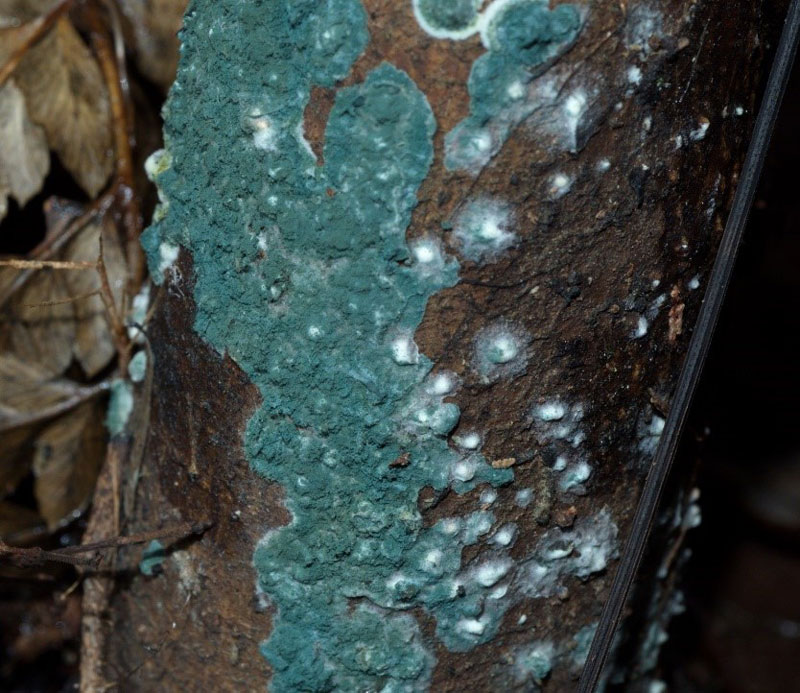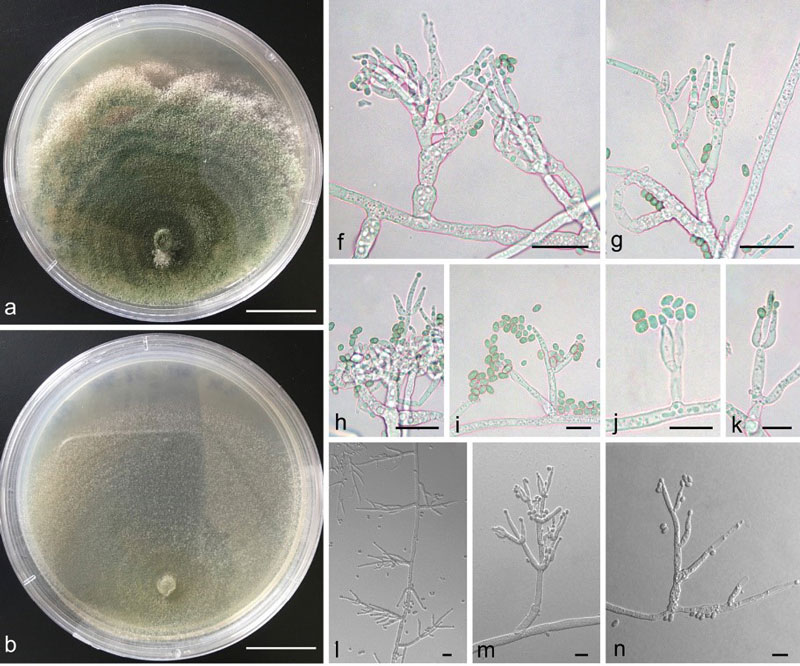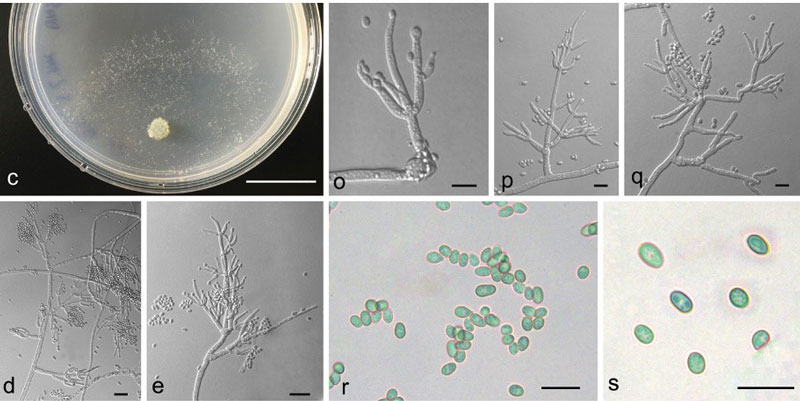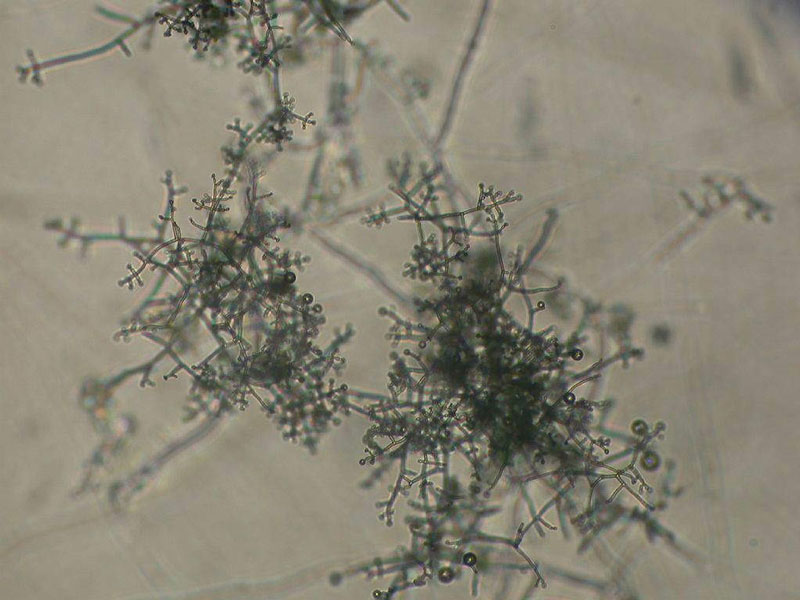Pers. 1794
What is Trichoderma?
The genus Trichoderma is comprised of filamentous, predominantly soil fungi, which are commonly associated with plants. Trichoderma spp. are rhizocompetent species, meaning they readily colonize the rhizosphere (the soil zone surrounding the plant roots) and rhizoplane (the external surface of roots). They are commonly found mostly in forest and agriculture soils and have a worldwide distribution. These fungi are colonizers of cellulosic materials and can thusly be readily obtained from decaying or dead plant matter (Fig. 1).

They reproduce asexually via conidia, while the sexual stages are classified into the Hypocrea genus. Some species are capable of plant pathogenicity, and certain Trichoderma spp. have increasing importance as human pathogens. Trichoderma spp. show root stimulating properties and microorganism antagonism (mycoparasitism), and can thusly be heavily exploited for plant pathogen biocontrol (1).

Trichoderma morphology
Generally, Trichoderma spp. Colonies have low growth and are rapid growers, with temperature growth specter ranging 25–30 °C (77–86 °F) and some extreme Trichoderma spp. being able to grow at 45 °C (113 °F). Colonies’ colors range from dark and light green to yellow and white. The green color, in some species, is sometimes only expressed after light exposure. They often display characteristic irregular growth with a loose texture and often appear in isolated patches and tufts (Fig. 2).


Conidiophores (asexual spore-bearing structures) are very branched, growing in irregular sizes. Branches most often form at nearly 90° with respect to the main axis (Fig. 3). They can be observed loosely or compactly growing in small dense clumps, often creating concentric rings or emerging along the short aerial hyphae. Conidia are single-celled, smooth or rough walled, and ellipsoidal. Sizes generally range from 3–5 µm in length and 2–4 µm in width (2).

Which are common Trichoderma species?
The Trichoderma was originally established in 1794 by German mycologist C.H. Persoon. The connection of the asexual Trichoderma to the sexual state of a Hypocrea species was suggested in 1865 by L.R Tulasne and C. Tulasne. Since then, both genera had many misidentifications until the application of molecular taxonomic tools. Today, the Trichoderma genus contains around 100, while Hypocrea holds approximately 70 species (1). Some of the more common species include:
- Trichoderma harzianum: A well-known species and is widely used as a biocontrol agent and for enzyme production.
- Trichoderma viride: Known as the “green mold of mushrooms”, for some time, it was considered to be the only species in the Trichoderma genus. T. viride is used for the biocontrol of many plant pathogens.
- Trichoderma longibrachiatum: This species of mold is often found in window filters, air conditioners, carpets, bathrooms, and kitchens. It is known as an opportunistic pathogen of humans and can cause adverse health effects in immunocompromised individuals.
- Trichoderma reesei: This particular species produces cellulase, an enzyme widely used in the food production, textile, and paper industries. Stonewashed jeans are made with cellulase produced by T. reesei.
What is Trichoderma used for?
The genus Trichoderma holds great economic and social importance, as it has applications mostly in agricultural and biotechnological industries.
Being a mycoparasite, the Trichoderma genus has found applications in the biocontrol of many crop plants’ fungal pathogens. The use of specific fungal organisms that interfere with phytopathogens is an ecological and sustainable way to overcome the problems caused by the standard application of chemical fungicides. The antagonism of Trichoderma spp. towards phytopathogens is achieved through various mechanisms that inhibit the pathogen competition for nutrients and space and stimulate antibiosis. Trichoderma spp. secrete proteolytic enzymes (hydrolysis of proteins or peptides), and volatile secondary metabolites, thereby impairing the growth conditions of fungal pathogens. Another useful trait in pathogen control that Trichoderma spp. possesses is plant growth stimulation. These fungi promote the growth of the plant’s rhizoplane and plant defense responses. This is achieved through influencing the balance of growth hormones such as auxins and gibberellins (1,3,4).
T. resei is among the most important Trichoderma species for industrial purposes. It is widely used for the industrial production of the enzyme cellulase. This enzyme is used in the production of second-generation biofuels. More closely, T. resei is applied in the improvement of efficiency of the multi-enzyme machinery produced to decrease costs and time of production of bioethanol from cellulosic waste. Cellulases are also used in the pulp-paper and textile industry (1,5).
What are health effects of Trichoderma molds?
Several Trichoderma species are associated with opportunistic human infections. These include T. atroviride, T. harzianum, T. koningii, T. longibrachiatum, T. viride, T. citrinoviride, T. pseudokoningii, T. reesei, and the asexual state Hypocrea oreantalis. The problem with the infections caused by Trichoderma spp. infections is that they can be problematic to differentiate from those produced by Aspergillus species because they share a common hyphal morphology.
Normally, healthy humans are more than capable of fighting off any inhaled or ingested Trichoderma spp. spores. However, due to an underlying disease or immunosuppressive therapy in immunocompromised individuals, spores manage to germinate undetected by the immune system and cause mycosis.
Opportunistic Trichoderma human infections may include invasive sinusitis (inflamed sinuses), brain abscess, liver infection, necrotizing stomatitis (inflamed mouth), hypersensitivity pneumonitis, skin infections, and disseminated infections, mostly in transplant recipients (6,7).
Is Trichoderma toxic?
Trichoderma longibrachiatum produces small toxic peptides trilongins. When absorbed by human cells, they cause obstruction channels that carry potassium and sodium ions across the cell membrane, which constitutes cell action potential and normal cell signaling. This can be very harmful as essential cells as cardiomyocytes (heart), pneumocytes (lungs), and neurons can be affected, which will lead to conduction defects in these organs. Trilongins are resistant to high temperatures and antimicrobial medications, complicating the treatment process (8).
Under certain conditions, Trichoderma viride can produce gliotoxin. This mycotoxin can compromise the human immune system, inhibiting phagocytosis, blocking inflammatory response, and acting as an immunosuppressor. Gliotoxin can also be neurotoxic (9).
Where does Trichoderma grow in the house?
Being a widespread mold with prolific spore production, Trichoderma can often be found in households. As with most house molds, these fungi usually develop on water-saturated wood items, cellulose-rich materials such as gypsum walls, wallpapers, air-conditioning filters, and carpet and mattress dust.
How to remove Trichoderma molds?
So how do you remove Trichoderma molds? Any mold discovered in your home should not be ignored or handled casually, especially when you don’t know if you’re dealing with a toxic species. The task of mold removal should be done with great care and precision to ensure effective, long-lasting protection against harmful mold spores.
Often, this job is best left to professionals, especially when dealing with toxic species like Trichoderma longibrachiatum.
Apart from getting rid of the mold problem and giving you peace of mind, mold removal experts can also provide great advice on preventing the growth of molds like Trichoderma in the future.
This does not mean that you cannot remove or clean mold from your home yourself. Small mold problems do not require professional help; however, you should always protect yourself and others with the proper safety and personal protective equipment. You should also take great care not to spread the mold to other areas of the house.
How to prevent Trichoderma molds from growing back?
Preventing the growth of Trichoderma molds (or any mold, for that matter) is not easy, and it requires regular monitoring of your property for signs of moisture—the most common cause of mold growth.
At Mold Busters, we always recommend investigating why the mold occurred in the first place. Was there a recent flood? Is there a leak somewhere nearby? Is the area properly ventilated? After that, we evaluate the extent of the mold damage and perform a scope-of-work assessment to give you an understanding of the remediation process as well as how much it will cost to remove the mold.

Did you know?
Chaetomium is the 2nd common toxic mold type found in homes we tested?! Find out more exciting mold stats and facts inside our mold statistics page.
References
- Schuster, A., & Schmoll, M. (2010). Biology and biotechnology of Trichoderma. Applied microbiology and biotechnology, 87(3), 787-799.
- Lieckfeldt, E., Samuels, G. J., Nirenberg, H. I., & Petrini, O. (1999). A morphological and molecular perspective of Trichoderma viride: is it one or two species?. Applied and Environmental Microbiology, 65(6), 2418-2428.
- Stewart, A., & Hill, R. (2014). Applications of Trichoderma in plant growth promotion. In Biotechnology and biology of Trichoderma(pp. 415-428). Elsevier.
- Viterbo, A., Ramot, O., Chernin, L., & Chet, I. (2002). Significance of lytic enzymes from Trichoderma spp. in the biocontrol of fungal plant pathogens. Antonie Van Leeuwenhoek, 81(1), 549-556.
- Kumar, R., Singh, S., & Singh, O. V. (2008). Bioconversion of lignocellulosic biomass: biochemical and molecular perspectives. Journal of industrial microbiology and biotechnology, 35(5), 377-391.
- Ram, R. M., & Singh, H. B. (2018). Trichoderma spp.: An opportunistic pathogen. Biotech Today: An International Journal of Biological Sciences, 8(2), 16-24.
- Liu D. Molecular detection of human fungal pathogens. 2011;932.
- Hübner, C. A., & Jentsch, T. J. (2002). Ion channel diseases. Human molecular genetics, 11(20), 2435-2445.
- Brian, P. W. (1944). Production of gliotoxin by Trichoderma viride. Nature, 154(3917), 667-668.

Get Special Gift: Industry-Standard Mold Removal Guidelines
Download the industry-standard guidelines that Mold Busters use in their own mold removal services, including news, tips and special offers:

Written by:
Dusan Sadikovic
Mycologist – MSc, PhD
Mold Busters
Fact checked by:
Michael Golubev
General Manager
Mold Busters
